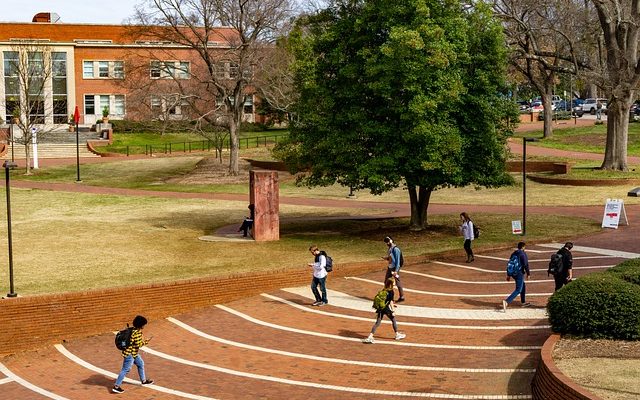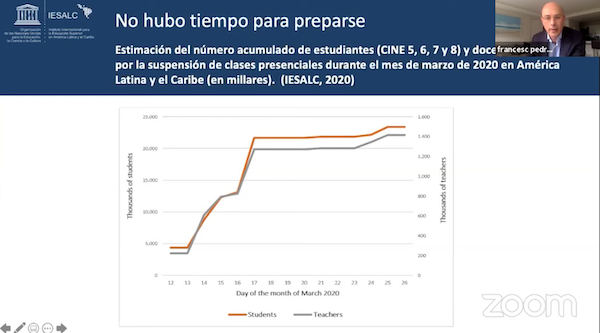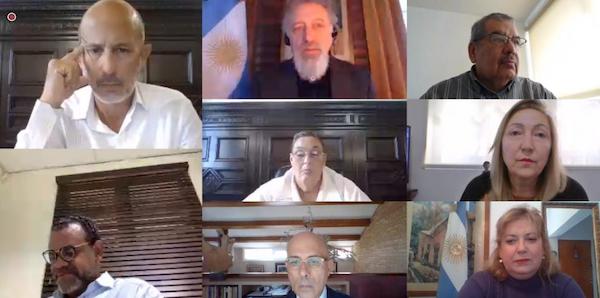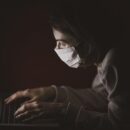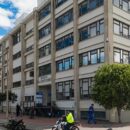How to prepare for the reopening? IESALC recommendations for how to transition towards the new normal in higher education
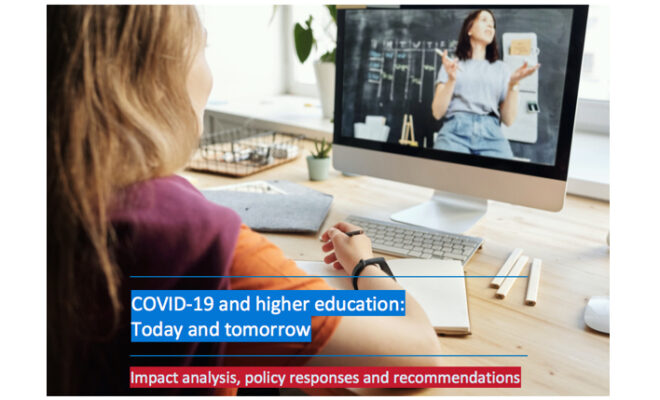
• The Institute suggests to higher education institutions that they follow a 3 – Phase Plan: distance teaching continuity; resumption of face-to-face teaching activities respecting health protocols and restructuring teaching models to create a hybrid one which includes classroom and virtuality.
• IESALC calls on States and Institutions to give priority attention to the lack of equipment and connectivity; offer cell phone services and applications, and ensure that students and teachers have uninterrupted connectivity either on their phones or online.
• Urges States to consider higher education in its stimulus plans for economic and social recovery; forge national consensus; establish a clear regulatory framework; and promote international cooperation.
The world was unprepared for a disruption in education of this magnitude, where schools and universities worldwide closed their doors overnight and rushed to deploy distance education solutions to ensure pedagogical continuity. In this global emergency context, Latin America is no exception, with just 1 in 2 households with broadband Internet service, with practically no contingency plans to face the change from the face-to-face model to the distance education model, which has impacted all higher education actors in an unprecedented manner.
This situation has consequences for the lives of students, especially the most vulnerable, since the context is one in which inequalities in learning can widen, thus increasing marginalization and the number of possible dropouts. These concerns are addressed in the IESALC report COVID-19 and higher education: today and tomorrow. Impact analysis, policy responses and recommendations, (IESALC, 2020). In its Foreword, Stefania Giannini, UNESCO Assistant Director-General for Education, insists on the need to ensure that equity is a guiding principle in all higher education strategic action: “No student should be left behind because of this crisis. I trust this report will be instrumental for all higher education stakeholders as they uphold this principle and translate it into significant actions.”
The UNESCO International Institute for Higher Education in Latin America and the Caribbean report addresses those responsible for the design and implementation of educational policies, and the impact that the global emergency has had on teachers who have virtualized face-to-face classes without changing the curriculum or the methodology, amidst difficulties of availability of equipment, Internet, tools and pedagogical plans, a situation which has given rise to what has been called the corona teaching syndrome, characterized by frustration and stress during the adaptation process.
Against this background, IESALC anticipates a short-term decline in the demand for higher education, due to the health crisis and its financial consequences, and makes a special appeal to governments to see higher education as a tool for economic recovery and integral to the stimulus programs being designed. “It is about recognizing at the political level that higher education has a permanent and crucial role to play in promoting socio-economic mobility, innovation and economic recovery,” adds Francesc Pedró, Director of IESALC and lead researcher.
HORIZON OF OPPORTUNITIES

In this light, IESALC proposes a road map for emerging from the crisis and preparing for the reopening of HEIs, while guaranteeing the equal right of all to education. The first phase of the transition process which contemplates the transition from teaching continuity to reopening focuses primarily on providing support to students and teachers to enable pedagogical continuity with quality and equity, meeting the needs of equipment, connectivity, and services for mobile applications; and, secondly, on adequately planning the face-to-face reopening of operations taking on board health, organizational, pedagogical and financial issues, actions that must be supervised by a crisis management cabinet that ensures continuity and fairness in training and compliance with protocols.
The second phase, which marks the transition from reopening to restructuring, contemplates the implementation of compensatory measures to support learning among disadvantaged students, and the transfer of curricular content to digital formats. Some strategies include individualized tutoring; small learning groups for student leveling in critical subjects given their instrumental nature; and summer (or winter) schools offering make-up seminars.
The third phase occurs parallel to the recovery process. It entails the documentation of the pedagogical changes introduced and their impacts following implementation; internal reflection in the sector on the renewal of the teaching and learning model, learning from mistakes and scaling-up digitization, hybridization and ubiquitous learning. This will require investing in technologies, teaching resources and supports made available to all to improve the quality of face-to-face teaching and promoting hybrid methodologies through the redesign of teaching and learning processes that combine the best of face-to-face with the potential of technologies. “HEIs will have lost a great opportunity if they do not pause for internal reflection, with the participation of students and teachers, on the lessons learned during the crisis, on the teaching and learning processes.”
Download the report:
IESALC report COVID-19 and higher education: Of the immediate effects the day after. Impact analysis, policy responses and recommendations
Picture courtesy of Pexels.
RELATED ITEMS


